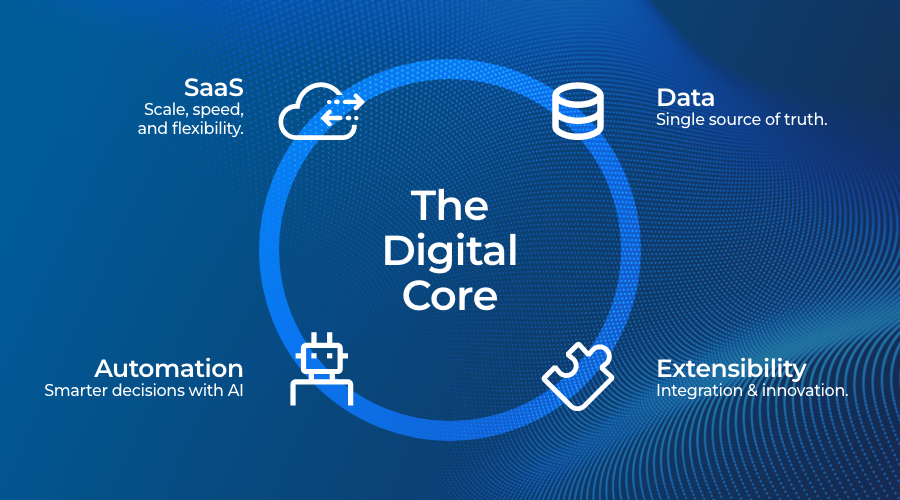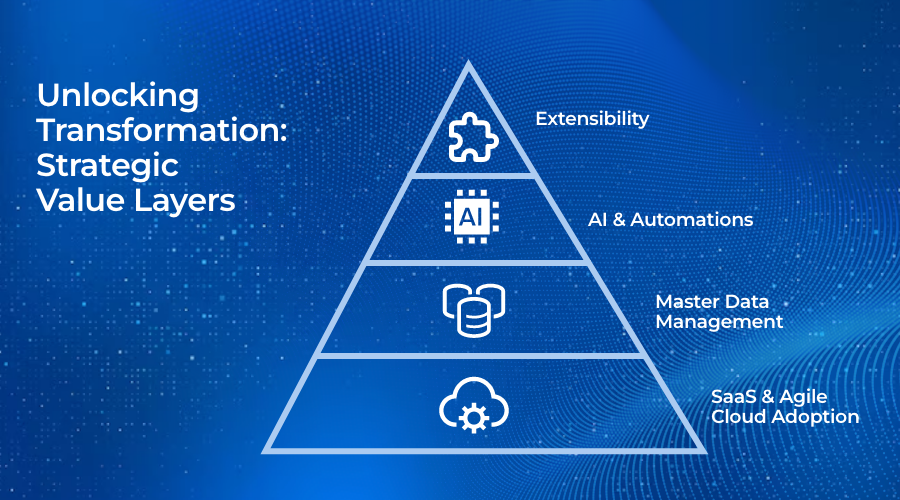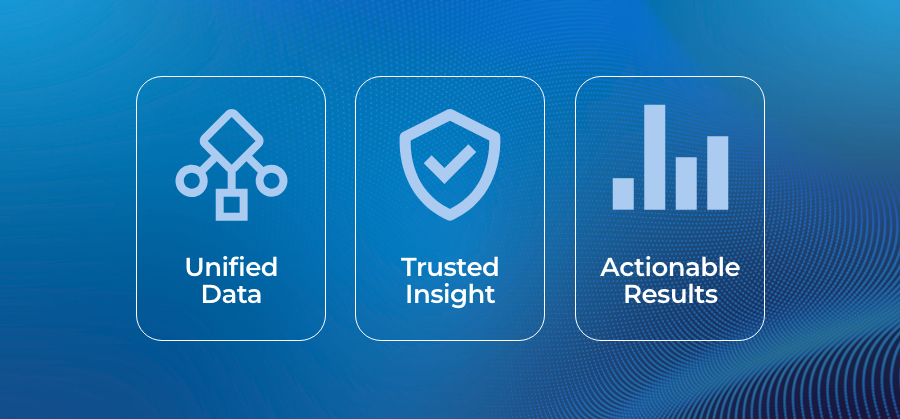Energy demand is rising fast. Urbanization, industrial growth, and the rapid adoption of AI are pushing consumption upward, especially in emerging markets where access and affordability are top priorities. By 2050, global energy use is projected to grow by 50%. That puts added pressure on established producers to deliver more. Cleaner, more reliable energy must be delivered while managing high costs, shifting policies, and volatile prices.
Natural gas continues to play a central role. It is abundant, dependable, and often a lower-emission option compared to alternatives.
So how do leading energy companies stay ahead and build operations ready for what comes next?
4 Building Blocks: SaaS, Data, Automation, and Extensibility
The most future-ready operations share one thing: a strong digital core. That foundation is built on four essential capabilities.
- SaaS
True SaaS removes the burden of managing infrastructure. It gives companies the scale and speed to adapt quickly. - Data
When clean, governed data is pulled together from spreadsheets, contracts, sensors, and disconnected data lakes, it becomes a true source of value and a single source of truth. - Automation
AI and automation help teams move faster and work smarter. Embedded analytics and context-aware systems drive better decisions. - Extensibility
Open, modular platforms make collaboration easier across technology providers, partners, and internal teams. This flexibility makes it easier to integrate systems, customize workflows, and move faster toward innovation.
Together, these four areas form the digital core of modern energy operations that are built to meet today’s challenges and tomorrow’s opportunities.

What Is the Digital Energy Platform
At its core, the digital energy platform is a unified system that connects and contextualizes operational, financial, and field data. This turns disconnected inputs into actionable insight across the energy value chain.
Instead of siloed data from spreadsheets, contracts, and ERP systems, companies gain a complete picture. Built-in governance, security, and compliance ensure that information is not just collected but trusted and ready to use.
Take crude oil as an example. Production in the lower 48 rose by 3% year over year even with fewer rigs. A digital platform helps producers optimize drilling, streamline electric fracturing, and improve decision-making through better data collaboration.

Unlocking Transformation: Strategic Value Layers
- SaaS & Agile Cloud Adoption
SaaS platforms remove the limits of legacy software. They scale easily, update quickly, and adapt as needed. One independent upstream operator used this approach to grow from a small team to hundreds. From day one, they automated key workflows, integrated systems, and treated data as a company-wide asset instead of a departmental task.
They also adopted Microsoft Copilot to embed AI into tools their teams already used. By focusing on a few high-impact areas first, they avoided fragmented data and gained momentum quickly. With a strong cloud strategy and trusted data foundation, they were able to scale enterprise-grade AI as they grew. - Master Data Management and Governance
Oil and gas data lives in many places. Leases, contracts, SCADA, finance, and production systems often store information in fragmented formats. AI then transforms the unified data into real-time insight and smarter forecasting. This makes better decision-making possible at scale.
With governance and compliance in place, data becomes even more powerful. Imagine a field team using natural language to instantly access and act on the data they need. That is the future of collaborative, trusted information. - AI & Automations
Not all AI transforms decision-making. To be effective, it must work within a connected, cloud-based digital core.
At Quorum, we see Agentic AI as a digital teammate. It automates routine tasks, surfaces insights, and allows people to focus on higher-value work. For example, integrating AI with land systems allows teams to extract key information from unstructured lease documents and respond quickly.
The approach is practical. AI can be deployed for specific use cases or used in automated workflows that deliver measurable results. - Extensibility
Extensible platforms are designed to grow and change with the business. If you need a new workflow, feature, or system connection, you can add it without reworking the entire architecture.
This flexibility supports important use cases such as emissions tracking, asset optimization, land management, and dynamic scheduling. Operators can plug in AI tools, build custom extensions, and integrate with other systems without being locked into a single vendor.
That kind of adaptability helps companies stay agile, protect their digital investments, and drive efficiency over time.
From Upstream to Renewables—Where the Platform Goes Next
Quorum’s vision is a single, unified platform that connects workflows across the full energy value chain.
In upstream, this means linking financials, operations, reserves, planning, and execution to improve efficiency and decision-making. In midstream, the platform can be enhanced with AI-driven features like anomaly detection and predictive performance analytics that reduce downtime. In renewables, it supports logistics and emissions tracking for wind and solar, while continuing to recognize natural gas as a bridge fuel in the transition.

Accelerating the Future Via Simplification
Quorum connects the full flow of energy operations. From lease to reserves, capital planning to execution, forecasting to emissions, and production to performance, the platform is designed to turn data into value.
The goal is simplification. When systems work together, when data flows cleanly, and when insights are easy to act on, teams can operate faster and with more confidence.
In a complex and fast-moving industry, real transformation starts with a platform built to simplify. That is where opportunity becomes action.
 Previous Page
Previous Page